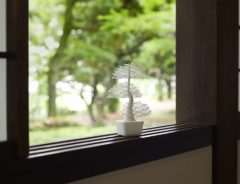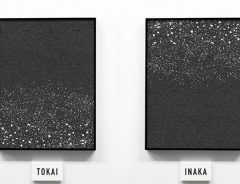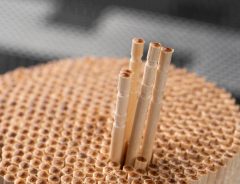- Tags:
- Design / gender roles / Monyaizumi / Parasol / Poster
Related Article
-

Japanese Designer And Welder Couple Team Up To Create Awesome Cardboard Mecha For Cat
-

New Grid-Bonsai Trees Let You Enjoy Traditional Japanese Art As A Puzzle
-

Japanese Designer Shows the Difference Between Cities and Countryside with Brilliantly Simple Illustration
-

The real reason why Japanese toothpicks have grooves in them
-

Astonishing Memo Pads Reveal Intricate Embedded Models The More You Use Them
-

Japanese felt artist continues to craft adorably realistic cat frames



Japanese summers are muggy and brutal, and 2020 was no exception. Natsubate 夏バテ, summertime fatigue, is a real problem as the subtropical island nation's humidity can be overwhelming. A number of discount gadgets and novelty fans help residents beat the heat, but many turn to more traditional methods. For example, women carrying parasols are a common sight in Japan during the summer months.
The operative word being "women."
A recent campaign by The Japanese Weather Association promotes the merits of parasols, for both sexes. According to the organization, sun umbrellas drop the effective temperature for users by seven degrees Celsius. In addition to keeping consumers cool, parasols double as a social distancing tool during the coronavirus outbreak. Anyone who has walked down a busy sidewalk on a rainy day can attest how crowding quickly becomes limited, sometimes frustratingly so.
Nevertheless, in Japan, like most countries, parasols are undoubtedly considered effeminate. With the tagline, "The problem is prejudice, not UV rays," the agency's campaign aims to change this gender stigma. If successful, males in Japan may receive a much needed break from the heat while bolstering the parasol industry which saw sales rise 30 percent in 2020.
A Poster Campaign: Walk Freely in the Shade
Artist Monyaizumi (@Monyaizumi), who Grape has covered before, recently teamed with The Japanese Weather Association to create a poster campaign touting the benefits of parasols—for both sexes. They point to “prejudiced” attitudes that stigmatize the use of the item by men.
Reproduced with permission from Monyaizumi (@Monyaizumi)
“Walk freely in the shade. On hot summer days, a parasol lowers the effective temperature by seven degrees Celsius.”
Reproduced with permission from Monyaizumi (@Monyaizumi)
“Stop saying parasols are for women. The problem is prejudice, not UV rays."
Reproduced with permission from Monyaizumi (@Monyaizumi)
“Parasols are good for children who have trouble social distancing. Parasols don’t just break the heat, but can also keep people from crowding.”
The Motivation
We at grape Japan were impressed by the campaign. We caught up with The Japanese Weather Association and asked about the motivation behind the campaign.
How did these posters come about?
“We worked together with outside planners and designers to produce everything. We started by asking an outside planner to design a creative and socially active message related to the climate and weather. We wanted something related to heatstroke and the like that would inspire action. This campaign is also in its second year. We continued it from 2019.”
Why did you choose a bichrome poster design?
“It’s easy to make a visual impact this way, so that’s why we settled on this design. While promoting parasols, we wanted viewers to ‘feel’ the sunlight. We chose these two colors to make that statement. The red color conveys a sense of heat, while we used cyan to imply a cool or cold temperature.”
Overall, it makes for an effective and memorable design. While men may still be warming up to the notion of using parasols, if the pandemic and climate change continue at this pace, residents may notice some changes the next time they are out and about in the city.